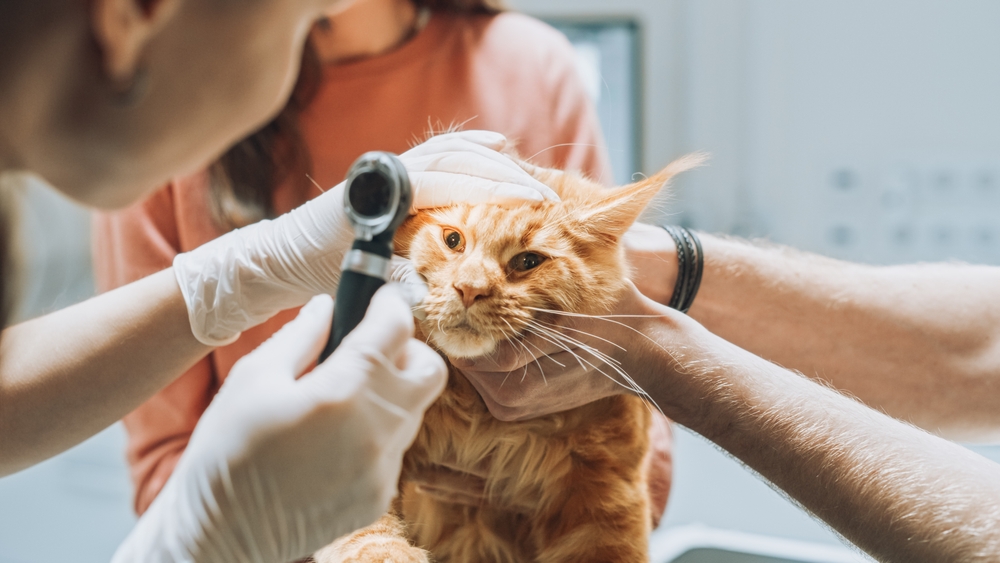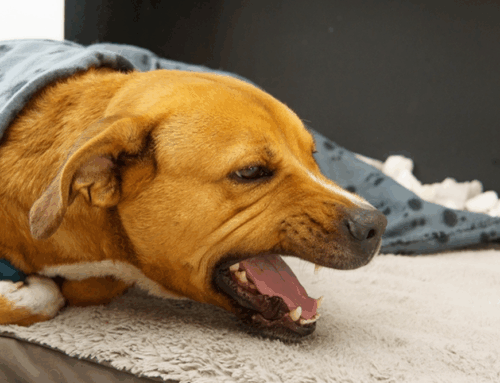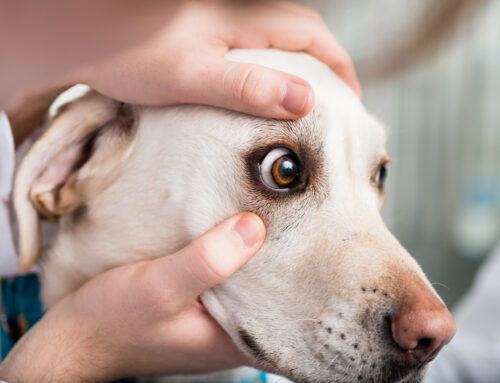Cataracts are a common eye condition in both people and pets. Cataracts’ telltale sign is a cloudy or bluish film on the eye lens. Cataracts can impair vision and affect your pet’s quality of life. Understanding cataracts, including their causes, signs, and treatment options, is crucial to ensure your pet maintains their vision. Our Southern Arizona Veterinary Specialty & Emergency Center team explains the causes and treatment options for pet cataracts.
What causes cataracts in pets?
Cataracts can develop for various reasons, including genetics, aging, diabetes mellitus, nutritional deficiencies, eye trauma, and certain medications. Primary cataract causes relate to genetics, while secondary causes are a result of trauma or disease. While some pets develop cataracts as they age, others are predisposed to this condition because of their breed or underlying health issues. Without veterinary intervention, cataracts can eventually cause your pet to go blind. Cataracts are more often diagnosed in dogs, but cats can also develop cataracts, so maintaining your pet’s eye health is important, no matter their species.
Additionally, what appears as cataracts in your pet may be other diseases that resemble this ocular condition. Other eye diseases that can cause eye cloudiness include:
- Nuclear sclerosis — An age-related change in the lens that causes a bluish-gray haze across the eye.
- Corneal disease — Affecting the cornea rather than the lens, corneal dystrophy or ulceration can cause the eyes to appear cloudy.
- Progressive retinal atrophy (PRA) — PRA is an inherited disease that can cause gradual vision loss over time.
Before diagnosing your pet’s eye cloudiness as cataracts, our veterinarian will need to examine your pet’s eyes. Always contact us if you notice changes to your pet’s vision or their eyes’ clearness.
Cataract signs in pets
Recognizing cataract signs is critical for early detection and intervention for your pet. Pets’ common cataract signs include:
- Cloudy or opaque appearance in one or both eyes
- Difficulty seeing in low light
- Bumping into objects or walls
- Increased clumsiness or disorientation
- Eye color or pupil size changes
- Squinting or eye rubbing
- Loss of interest in activities that require visual acuity such as playing fetch or chasing toys
Cataracts diagnosis and treatment options for pets

To definitively diagnose whether your pet has cataracts, our Southern Arizona Veterinary Specialty and Emergency Center veterinarian typically performs a thorough ophthalmic exam, which may include visual assessments, pupil dilation, and imaging tests such as ultrasound or electroretinography. Once diagnosed, cataract treatment options vary depending on the condition’s severity and your pet’s overall health:
- Medical management — In cataracts’ early stages, our veterinarian may recommend medical management to help slow the disorder’s progression and manage underlying health conditions contributing to their development. Management may include dietary changes, medication for conditions such as diabetes mellitus, and your pet’s eye health monitoring.
- Surgical intervention — Advanced cataracts or significant vision impairment may necessitate cataracts’ surgical removal. Cataract surgery in pets is similar to that in people and involves removing the cloudy lens and replacing it with an artificial intraocular lens (IOL) to restore vision. While cataract surgery can be highly successful, the procedure requires specialized equipment, expertise, and postoperative care to ensure optimal outcomes.
- Supportive care — Regardless of the treatment approach chosen, supportive care is necessary for pets with cataracts, which may include providing your furry pal with a safe and comfortable environment, avoiding situations that could exacerbate vision impairment, and administering prescribed medications.
Adequate vision is imperative to your pet’s quality of life. Cataracts can significantly diminish your furry pal’s ability to see and navigate the world without medical intervention. Be proactive about maintaining your pet’s ocular health by understanding cataracts’ causes, signs, and treatment options. If you suspect your pet has cataracts, call our Southern Arizona Veterinary Specialty & Emergency Center to schedule your pet’s eye exam. With timely intervention and appropriate care, your pet with cataracts can enjoy improved vision and a fulfilling life.








Leave A Comment